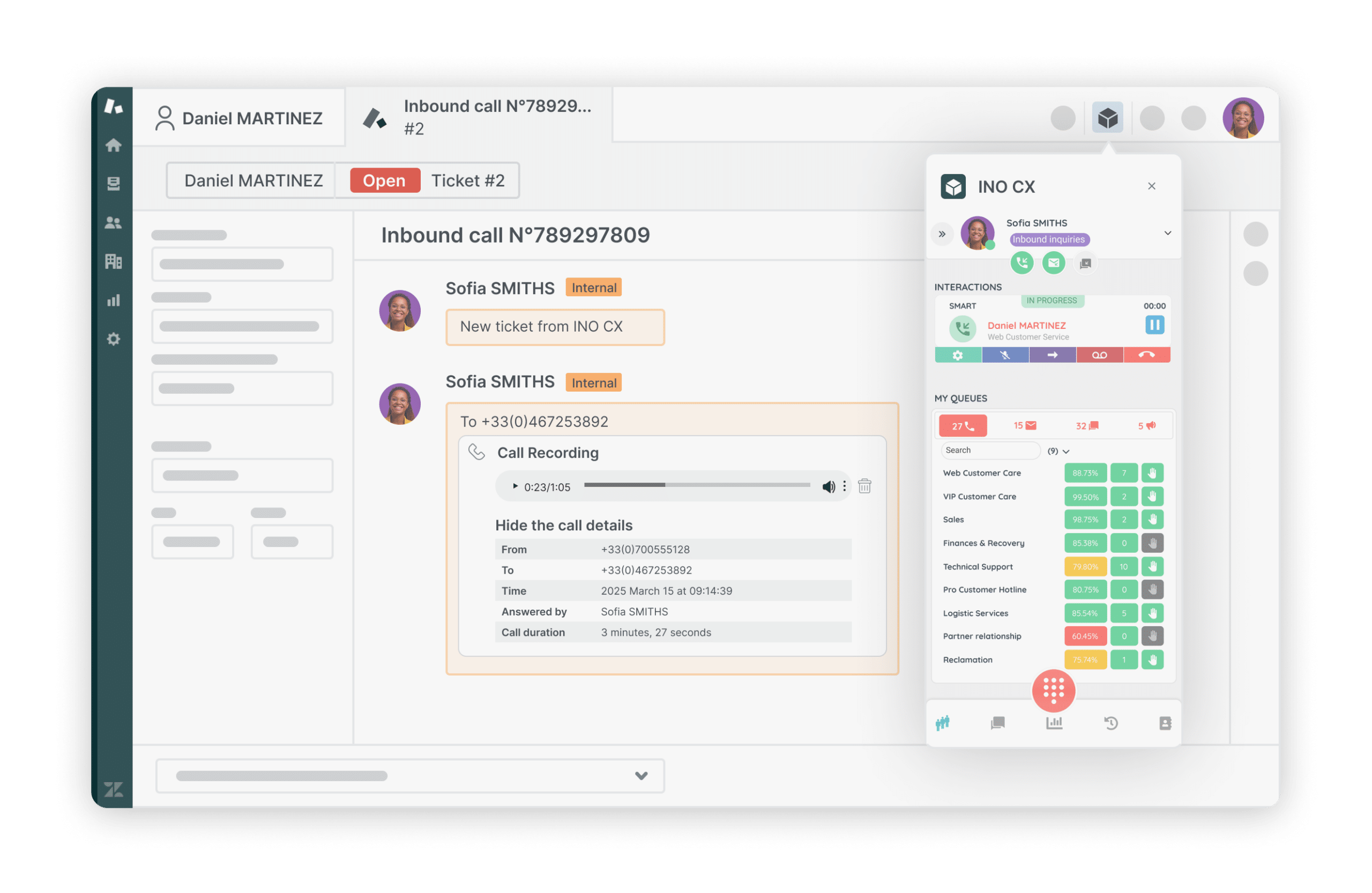Zendesk AI: Complete Buyer's Guide
Comprehensive customer service automation platform
Zendesk AI represents a comprehensive customer service automation platform that transforms high-volume support operations through intelligent AI agents and human-AI collaboration tools. Unlike standalone chatbot solutions, Zendesk AI integrates natively within the broader Zendesk Suite ecosystem, delivering end-to-end automation capabilities specifically designed for businesses managing complex customer interactions at scale.
Market Position & Maturity
Market Standing
Zendesk AI operates from a position of established market strength as part of Zendesk's comprehensive customer service platform ecosystem. The company's mature market presence provides stability and continued investment in AI capabilities, distinguishing it from newer entrants with uncertain long-term viability.
Company Maturity
The platform's continuous development of advanced features, including AI transparency capabilities and generative AI integration, indicates sustained R&D investment and commitment to market leadership [54][57].
Growth Trajectory
Large-scale implementations across diverse industries demonstrate market validation, with customers like NEXT (700 stores, 44,000+ employees) and Photobucket (70 million users) showcasing the platform's ability to handle complex enterprise requirements [42][50].
Industry Recognition
The platform's adoption by high-profile customers and documented performance improvements provide market validation beyond vendor marketing claims [42][50].
Strategic Partnerships
Zendesk AI benefits from the broader Zendesk partner network and integration ecosystem, providing customers with comprehensive implementation support and third-party tool compatibility [47].
Longevity Assessment
Zendesk AI's mature market presence provides stability and continued investment in AI capabilities, distinguishing it from newer entrants with uncertain long-term viability.
Proof of Capabilities
Customer Evidence
NEXT's comprehensive deployment across 700 stores with 44,000+ employees achieved 92% one-touch resolution rates while processing 653,000 monthly tickets [42]. Photobucket's implementation supporting 70 million users achieved 96% customer satisfaction while handling conversations autonomously [50].
Quantified Outcomes
Documented performance evidence includes 15% reduction in average handling time across all channels and 20% reduction in time per ticket with 16% faster first response times [42][52].
Case Study Analysis
NEXT's implementation included integration with NEXT's homegrown CRM system, showcasing technical flexibility for custom enterprise environments [42].
Market Validation
Large-scale implementations across diverse industries demonstrate market validation, with customers like NEXT and Photobucket showcasing the platform's ability to handle complex enterprise requirements [42][50].
Reference Customers
Enterprise customers like NEXT and Photobucket demonstrate the platform's ability to handle complex enterprise requirements [42][50].
AI Technology
Zendesk AI's technical foundation centers on autonomous AI agents that utilize advanced natural language processing for intent recognition, sentiment analysis, and contextual response generation [40].
Architecture
The system integrates multiple AI technologies including natural language understanding (NLU), generative AI for response creation, and predictive analytics for conversation routing [40].
Primary Competitors
Alternatives like Freshdesk's rule-based matching system and Quidget offer custom training options [45][58].
Competitive Advantages
Zendesk AI's native integration with the Zendesk Suite ecosystem eliminates third-party coordination complexity while providing comprehensive workflow automation capabilities [40].
Market Positioning
Zendesk AI positions itself as a comprehensive solution rather than a point solution, competing directly with integrated platforms while potentially over-serving businesses seeking basic automation capabilities [40].
Win/Loss Scenarios
Organizations should prioritize Zendesk AI when existing Zendesk Suite investment, high ticket volumes, and need for AI transparency align with business requirements [40][54].
Key Features

Pros & Cons
Use Cases
Integrations
Pricing
Featured In Articles
Comprehensive analysis of Automation for Ecommerce for Ecommerce businesses and online retailers. Expert evaluation of features, pricing, and implementation.
How We Researched This Guide
About This Guide: This comprehensive analysis is based on extensive competitive intelligence and real-world implementation data from leading AI vendors. StayModern updates this guide quarterly to reflect market developments and vendor performance changes.
58+ verified sources per analysis including official documentation, customer reviews, analyst reports, and industry publications.
- • Vendor documentation & whitepapers
- • Customer testimonials & case studies
- • Third-party analyst assessments
- • Industry benchmarking reports
Standardized assessment framework across 8 key dimensions for objective comparison.
- • Technology capabilities & architecture
- • Market position & customer evidence
- • Implementation experience & support
- • Pricing value & competitive position
Research is refreshed every 90 days to capture market changes and new vendor capabilities.
- • New product releases & features
- • Market positioning changes
- • Customer feedback integration
- • Competitive landscape shifts
Every claim is source-linked with direct citations to original materials for verification.
- • Clickable citation links
- • Original source attribution
- • Date stamps for currency
- • Quality score validation
Analysis follows systematic research protocols with consistent evaluation frameworks.
- • Standardized assessment criteria
- • Multi-source verification process
- • Consistent evaluation methodology
- • Quality assurance protocols
Buyer-focused analysis with transparent methodology and factual accuracy commitment.
- • Objective comparative analysis
- • Transparent research methodology
- • Factual accuracy commitment
- • Continuous quality improvement
Quality Commitment: If you find any inaccuracies in our analysis on this page, please contact us at research@staymodern.ai. We're committed to maintaining the highest standards of research integrity and will investigate and correct any issues promptly.